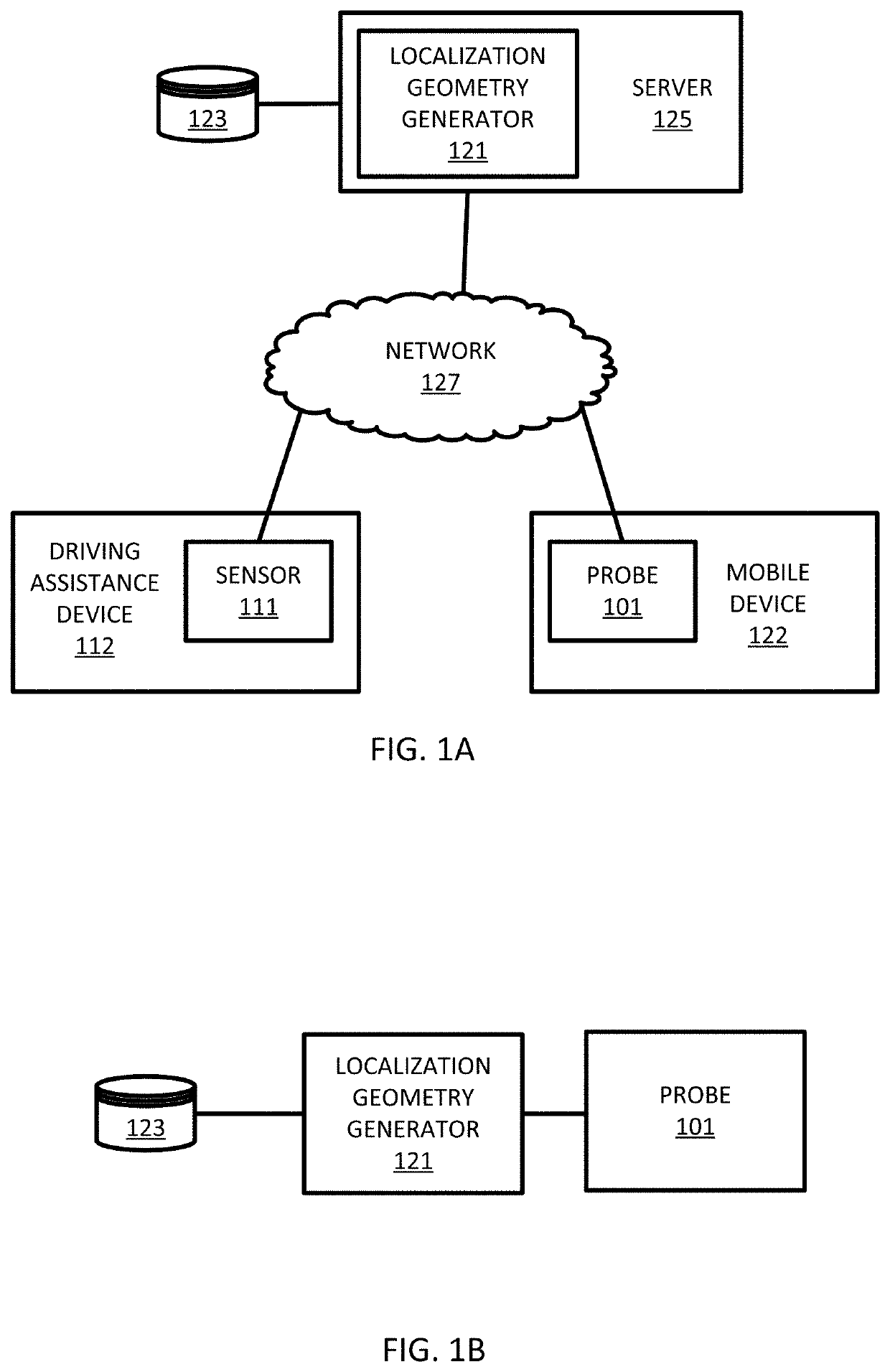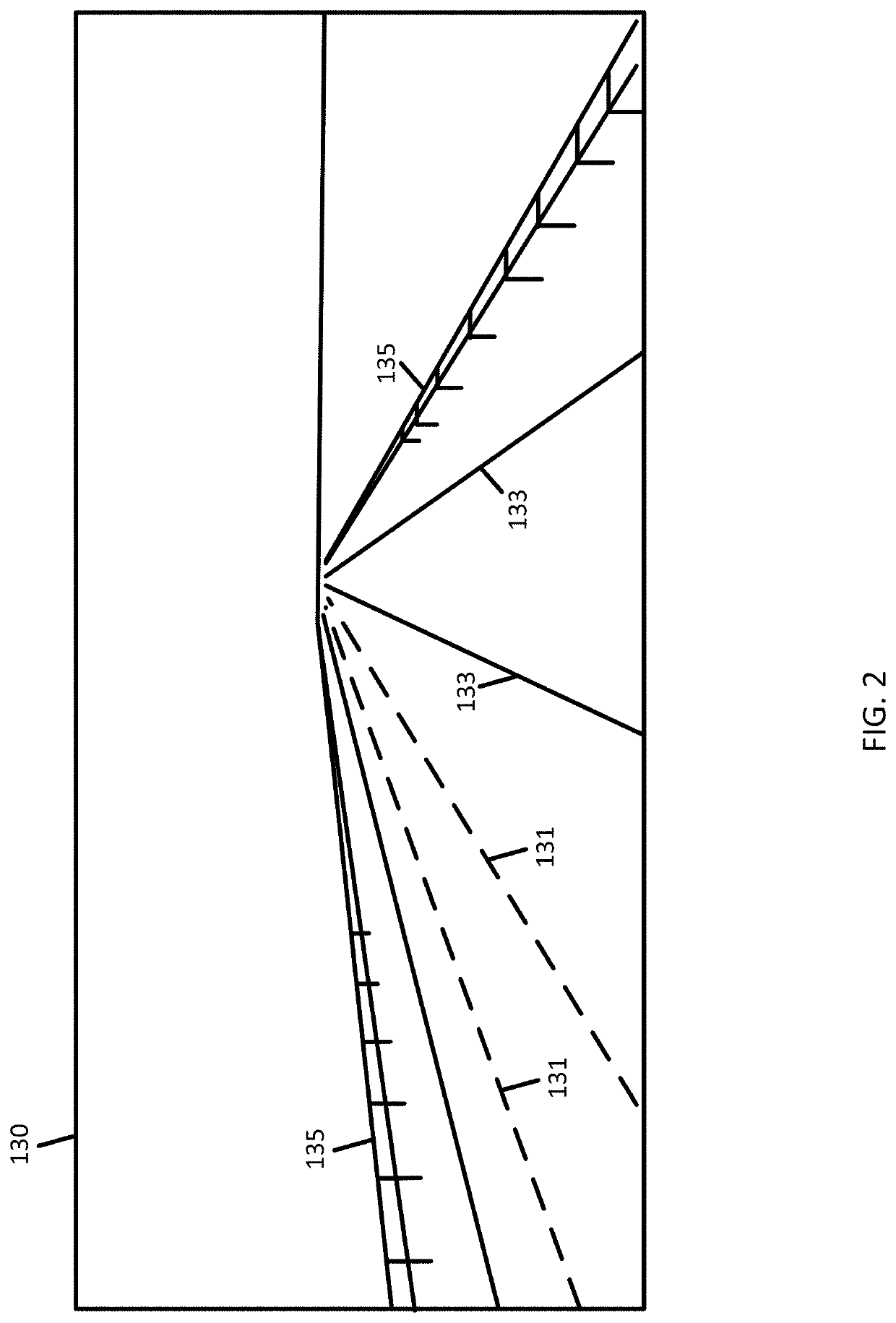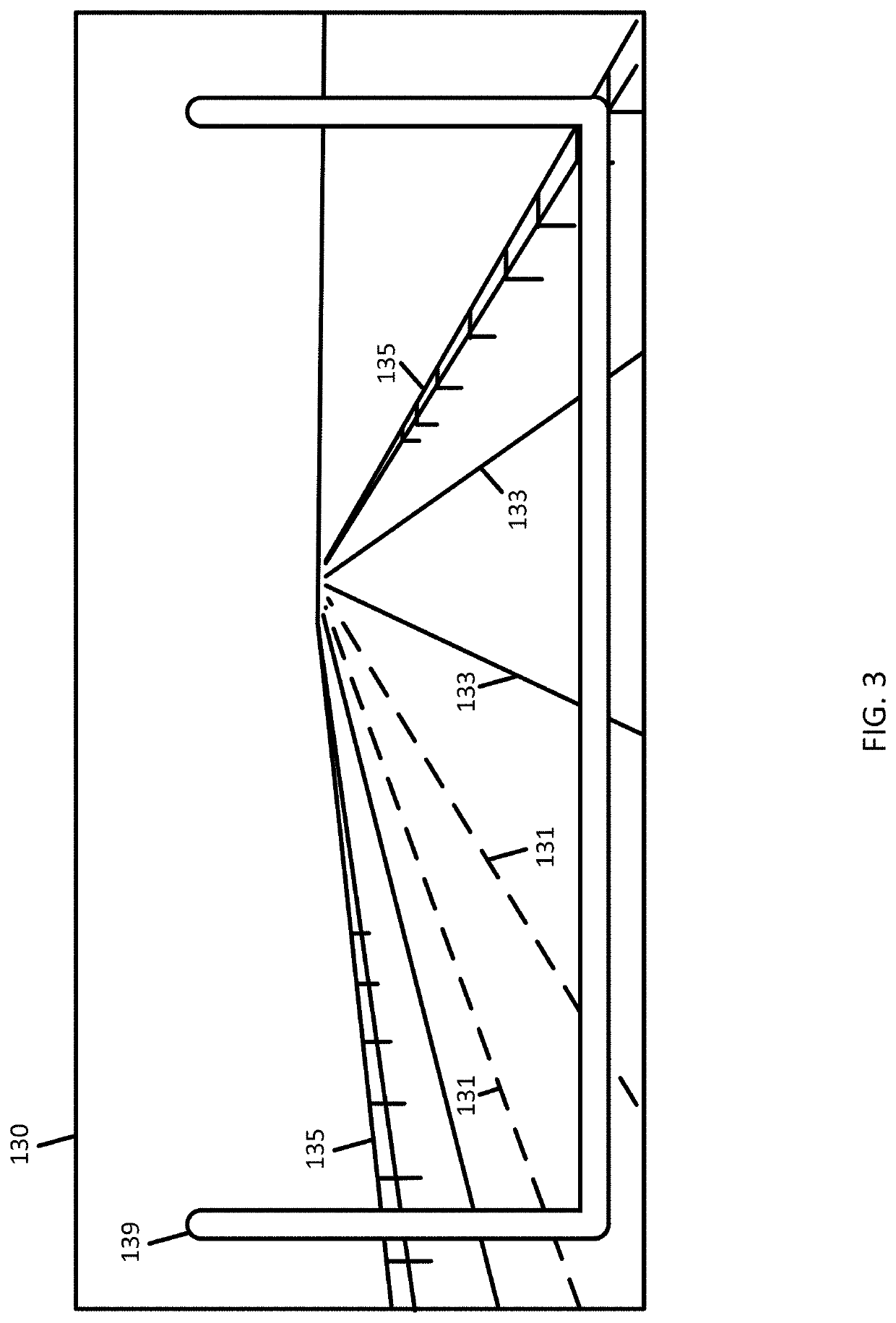Automatic localization geometry generator for stripe-shaped objects
a technology of automatic localization and geometry, applied in the direction of vehicle position/course/altitude control, process and machine control, instruments, etc., can solve the problems of high cost and turnaround optimization of conventional map coding procedures, a huge amount of manual labeling work in conventional techniques, and a large amount of resource-intensive map building procedures
- Summary
- Abstract
- Description
- Claims
- Application Information
AI Technical Summary
Benefits of technology
Problems solved by technology
Method used
Image
Examples
embodiment 1
[0190]A method for automatic localization geometry generation for stripe-shaped objects, the method comprising:[0191]identifying an image including a roadway having one or more stripe-shaped objects;[0192]determining, using a processor, at least one targeted region within the image, wherein the at least one targeted region is shaped to intersect the one or more stripe-shaped objects and overlaps a plurality of pixels in the image; and[0193]performing, using the processor, an image analysis on the image to determine when the at least one target region having the plurality of pixels includes a pixel in common with the one or more stripe-shaped objects.
embodiment 2
[0194]The method of embodiment 1, wherein the at least one targeted region includes a plurality of targeted regions spaced apart by a predetermined distance.
embodiment 3
[0195]The method of any of embodiments 1 and 2, wherein the at least one targeted region is U-shaped.
PUM
 Login to View More
Login to View More Abstract
Description
Claims
Application Information
 Login to View More
Login to View More - R&D
- Intellectual Property
- Life Sciences
- Materials
- Tech Scout
- Unparalleled Data Quality
- Higher Quality Content
- 60% Fewer Hallucinations
Browse by: Latest US Patents, China's latest patents, Technical Efficacy Thesaurus, Application Domain, Technology Topic, Popular Technical Reports.
© 2025 PatSnap. All rights reserved.Legal|Privacy policy|Modern Slavery Act Transparency Statement|Sitemap|About US| Contact US: help@patsnap.com



